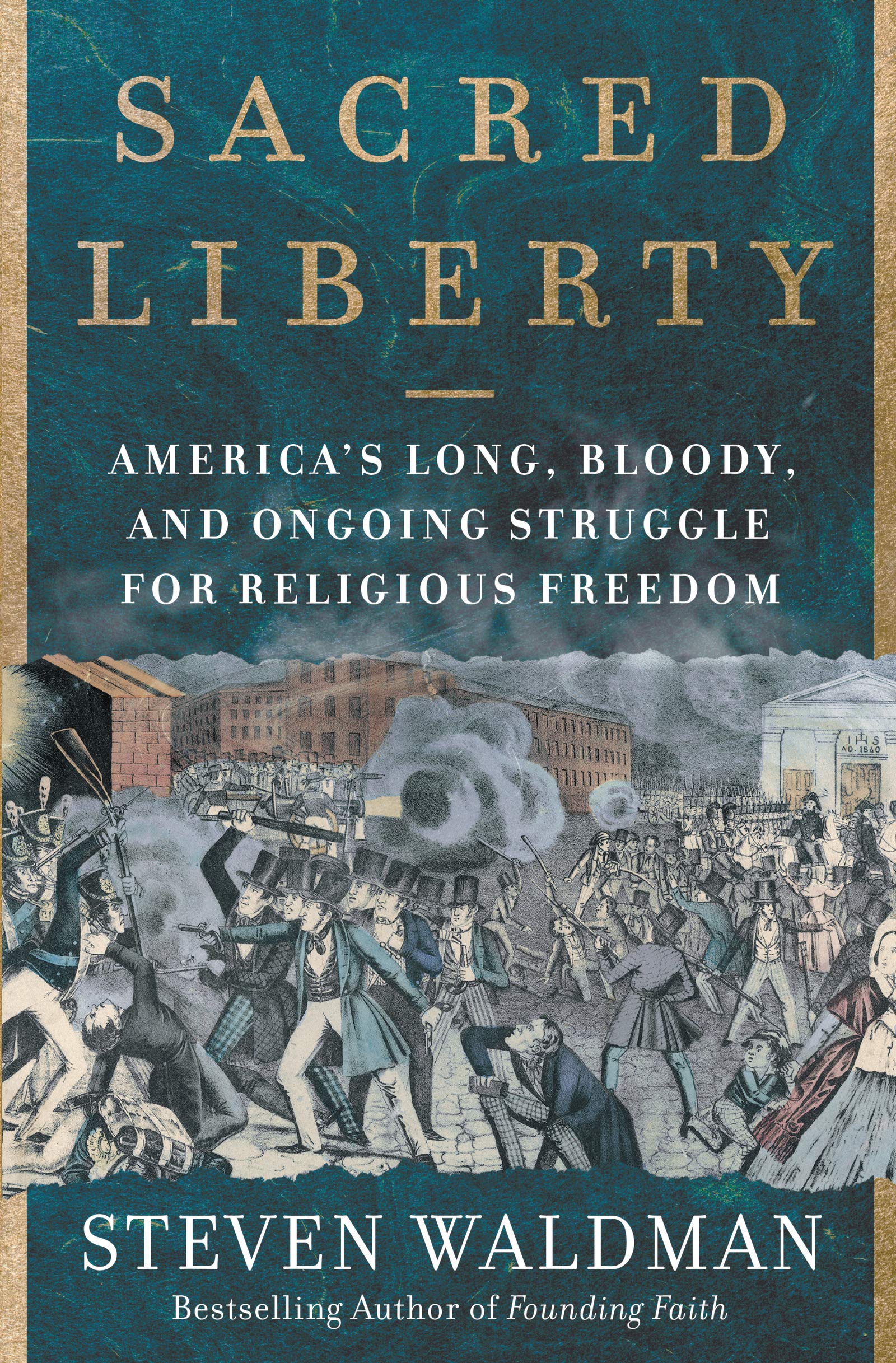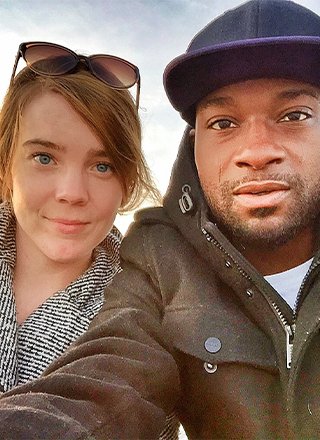|
Steven Waldman’s newly released book, Sacred Liberty: America’s Long, Bloody, and Ongoing Struggle for Religious Freedom, is a sweeping account of religious liberty and religious persecution in the United States from the 16th century to the modern day. The first chapters of the book are an analysis of the introduction, implementation and institutionalization of religious freedom in early American life and the formulation of the idea of separation of church and state. Waldman thoroughly debunks the notion of “The Founders” as a monolith with a uniform dogmatic belief as to how religious liberty should function, instead diving into the thinking of the leading defender of church-state separation against the objections of many, James Madison. As the spearhead of the conception of secular government in this country, Madison’s writings and contemporary accounts laying out his vision of separation and its mandated universality throughout American governance are critical in informing the present interpretation of separation by the general public, policymakers and the courts. During Madison’s time, the idea that any government could be separated from religion was a remarkable innovation. Even firm believers in religious freedom saw little “conflict in,” for example, “banning Catholics or Jews from holding [public] office.” In a chiefly chronological order, Waldman delves into all manner of faith tradition and their unique, but similarly turbulent, histories of integration into American society. In particular, he writes of the legal and violent resistance that met each new tradition in this land. Sacred Liberty includes a great deal about the Protestant versus Catholic tension that pervaded much of the first two centuries of the country’s existence. Furthermore, Waldman addresses the acute persecution of various Protestant sects and Catholics, Native Americans, Jews, Jehovah’s Witnesses, Mormons, Sikhs and Muslims in great detail. For some, the oppression, both legal and illicit, encountered in this supposedly free land was ultimately unbearable; in fact, Mormons decided to flee the country entirely. (Utah, their refuge, was still part of Mexico at that point.) |
Sacred Liberty: America’s Long, Bloody, and Ongoing Struggle for Religious Freedom by Steven Waldman. HarperCollins, 416 pp. |
Waldman also puts Madison’s innovative notion in perspective. Lawmakers and the public have often asked, How much separation is too much? According to Madisonian ideals, government involvement and connection with religion should be absolutely minimal. At the same time, collective wisdom and the First Amendment dictate we should “bend over backward to make sure secular laws don’t inadvertently do any damage to religious freedom.” Thus, the result is a prominent, inherent contradiction in the theory and implementation of the separation of church and state that plagues the country to this day.
Beyond his survey of the notion itself and the experience of faith communities in the U.S., Waldman also examines the progression of legal thought with the growth of the nation in general, and the role of the Supreme Court in particular in shaping the tradition of religious freedom. For much of earlier history (think Dred Scott), the court accepted as constitutional many abhorrent restrictions on personal liberty we only now take for granted. The notable and sudden shift toward deference to religious liberty occurred in the mid-20th century. Three years after the 1940 ruling in Minersville School District v. Gobitis in which the Supreme Court determined that a school could compel a Jehovah’s Witness student to salute the flag, it remarkably overruled itself in West Virginia State Board of Education v. Barnette. The public perception of religious freedom as a fundamental bedrock of the nation – especially juxtaposed to the ongoing global war on fascism – led three justices to switch sides.
The strength of separation of church and state, once a fringe concept promoted by a few radicals, has become so fundamental a part of U.S. civil life that it has impacted the dogmas associated with various religious traditions themselves, even becoming a worldwide American export. Fraught tension over compliance with church and state separation caused both the Mormon and Catholic churches to alter their sacred teachings. Deferring to secular law, the Mormon Church reversed its position on polygamy. For Catholics, it meant reversing the Vatican’s longstanding position of strong support for Catholic influence in government in favor of the value of separation of church and state.
In that light, Sacred Liberty is a remarkable showcase of the rapidity of change in a relatively short period of time in American society. Consider that the pope – a figure collectively vilified only 100 years ago as a corrupt and vindictive puppet master and the greatest enemy to Protestant America – has become a popular symbol of morality in this country. (Under Ronald Reagan, the vanguard and icon of the modern, Protestant Religious Right, full diplomatic relations were established with the Vatican.)
Whereas a leader of the then-heretical Church of Jesus Christ of Latter-day Saints, Parley Pratt, had been chased out of the U.S., most notably by members of the Republican Party, his great-great-grandson, Mitt Romney, formerly the governor of Massachusetts and now the junior senator from Utah, was that same party’s nominee for president in 2012.
This is not to say that one party had a monopoly on bigotry. Waldman rightly points out that religious hatred has transcended political parties. In 1838, Lilburn Boggs, governor of Missouri and a Democrat, issued one of the most infamous orders in the history of American religious liberty, declaring that “the Mormons must be treated as enemies, and must be exterminated or driven from the State.”
There are a few curious statements and omissions in Sacred Liberty, though, which detract from the author’s central message. For one, Waldman offhandedly states that the civil rights movement was “fundamentally a religious crusade,” with his evidence the gathering of supporters in houses of worship and the movement’s recollection of the exodus from Egypt. This radical restructuring of conventional thought about the wielding of religion as the movement’s primary inspiration rather than a useful tool of galvanization deserves much more substantiation and scrutiny than Waldman provides.
Additionally, Waldman fails to mention – even in passing – Gen. Ulysses S. Grant’s edict of wholesale expulsion of Jews from areas under his control in Tennessee, Mississippi and Kentucky during the Civil War, perhaps the second most infamous religiously motivated expulsion in American history after Boggs’s.
And, as a third example, Waldman writes without citation that “[t]he greatest threat to religious liberty [in the United States] is the powerful effort to demonize, marginalize, and persecute Muslims.” While the invective lobbed against Muslims is unquestionably prevalent and deplorable, violent, alarming anti- Semitism is also on the upswing. The casual, open prejudice against atheists in American society is also a serious challenge to true and free pluralism which we mustn’t overlook.
Sacred Liberty is, in the end, a reflection on the history of American religious freedom (and lack thereof) that has brought us to our current moment in time. The historical perspective presented in the book is extremely relevant to the modern era: without knowledge of the historical efforts to undermine separation of church and state through Bible studies in public schools, it is impossible to follow the through line to extremists’ insistence on the same thing to this day, for example.
As the current federal government, under the leadership of President Donald Trump and Vice President Mike Pence, is hell-bent on taking a sledgehammer to separation and imposing fundamentalist Christian theocracy in its place, there may be no better time to turn to this book and remind ourselves of the origin, implementation, subversion and, hopefully, ultimate triumph of separation of church and state in this country.
Zachary Freiman is a senior at Pomona College, majoring in public policy analysis and music. He interned in Americans United’s Communications Department this summer



